|

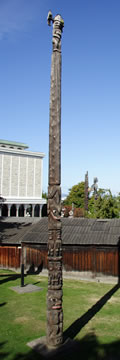 |
Gitxsan Pole, 1954
Carvers: Mungo Martin, David Martin, Henry Hunt and Tony Hunt
Based on: Gitxsan Memorial Pole
The original pole was raised jointly by two chiefs, Tu’pesu and Wawralaw, in 1855 or 1885 at Gitseguekla (Skeena Crossing). The name of the pole can be translated as Great Protruding (Being) from the Lake and refers to the history depicted on the pole. It was acquired by the provincial museum in 1953 (RBCM 15610 a-c). Although Mungo Martin and his colleagues were Kwakwaka’wakw (Kwagu’ł) carvers, they worked to understand and replicate the styles of other First Nations where appropriate, as this Gitxsan style pole demonstrates.
RBCM 20124.
All Colour Images - RBCM, 2006. |
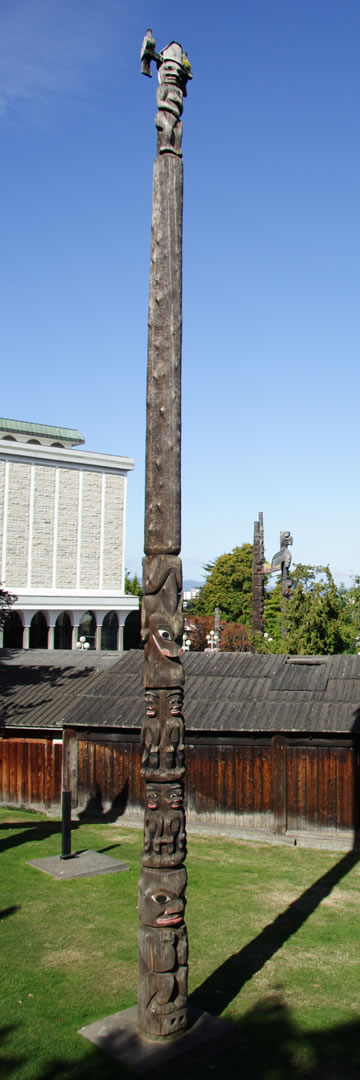 |
|
Great Protruding (Being) from the Lake, wearing headgear called the Brave’s Helmet. Real Kingfishers perch on a stick running through the helmet.
|
| Uncarved length of pole. |
| Hanging Frog, a crest that refers to the history of Neegyamks, a chief’s daughter who disappeared one night. After two years, frogs appeared in the chief’s doorway and led the people to a nearby lake. The lake was drained and a large number of frogs took flight. Neegyamks died and her father killed a large frog and took it for a crest. |
| Reflections in the Water, a crest derived from the legend of a woman who, while crossing a lake on a raft, saw faces of children in the water. Her family also saw the faces and composed a song to commemorate the adoption of the reflections (or shadows) as a crest. The woman and the children she saw in the water are shown on the pole. |
|
|
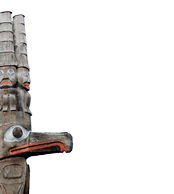





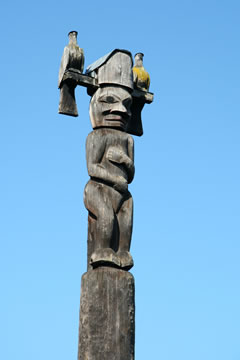
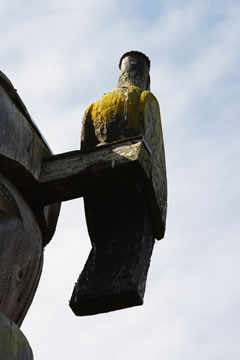
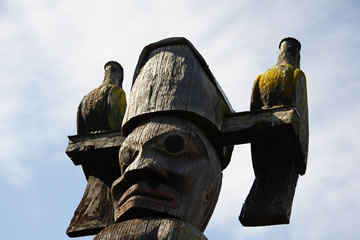
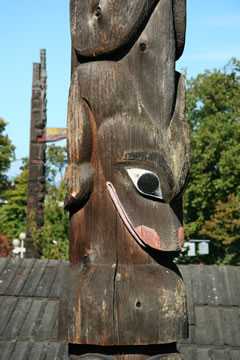
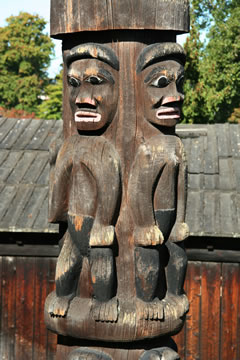
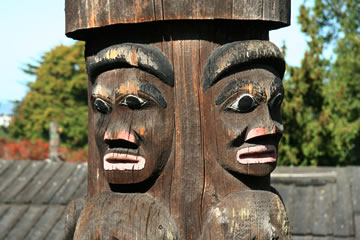
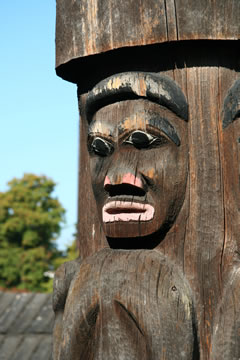
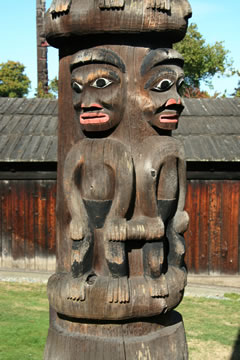
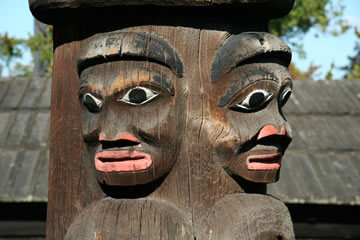
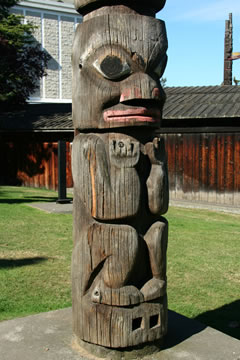
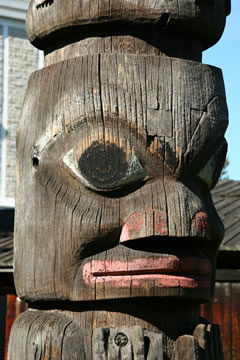
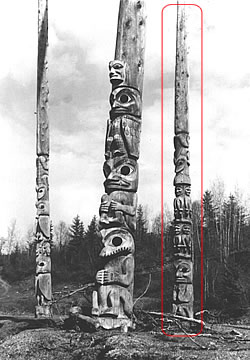 Gitsequkla 1946. T. W. S. Parsons photograph. RBCM PN 3814-b.
Gitsequkla 1946. T. W. S. Parsons photograph. RBCM PN 3814-b.